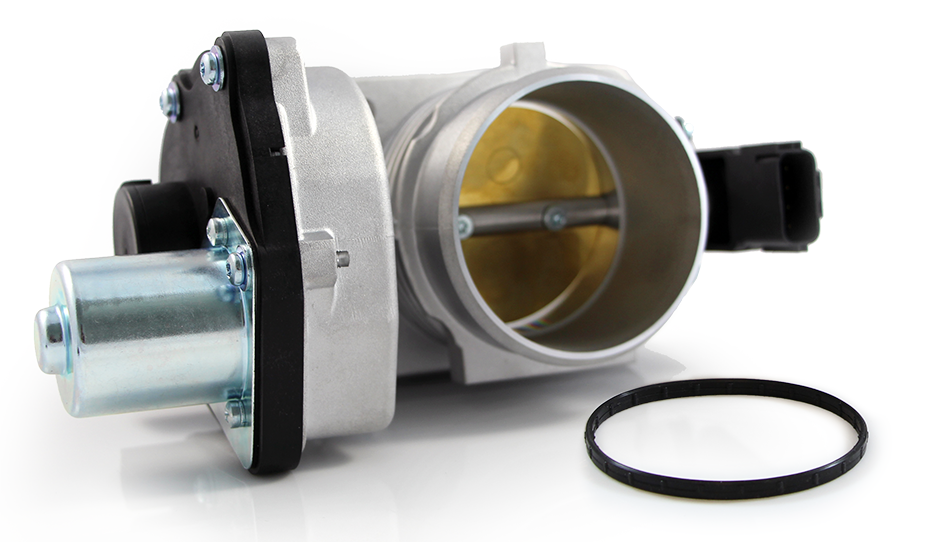
About Electronic Throttle Bodies
100% New ETBs, Never Remanufactured

Located in the air intake system, the Electronic Throttle Body (ETB) controls the amount of air flow into the engine as the driver steps on and off the accelerator pedal. More than 250 million vehicles on the road – roughly 95% – have ETBs.
Each of our Standard® Electronic Throttle Bodies is 100% new – so there’s no core charge – and undergoes extensive calibration and testing to ensure superior performance and durability out of the box. Each ETB also includes the proper gasket (where required) for a complete repair. So, in addition to providing comprehensive coverage, we’re proud to also offer premium-quality replacements for electronic throttle body repairs.
Learn more about Standard's What's In Your Box: Electronic Throttle Bodies
Standard® is proud to offer a line of ETBs that includes more than 200 SKUs covering more than 190 million Vehicles In Operation (VIO)
Standard® features the most comprehensive ETB coverage in the aftermarket
Every Electronic Throttle Body is 100% new, never remanufactured, and undergoes extensive calibration and testing
Impact on Engine Systems
An Electronic Throttle Body is a complex gear train that moves up to hundreds of times per mile, with no oil. As a result, ETBs have high failure rates. They usually fail because of wear on the gear train and bearings from age and mileage. Contamination can also lead to failure.
A rough idle, stalling or surging are all signs the Throttle Position Sensor may not be not functioning properly. A worn or malfunctioning ETB may not be able to control the blade as designed. When the original fails, a vehicle’s power, fuel economy and drivability may all suffer.
A worn or malfunctioning ETB may not be able to control the blade as designed — this will lead to decreased fuel mileage and acceleration problems
A rough idle, stalling or surging are all signs the Throttle Position Sensor may not be not functioning properly
ETBs usually fail because of wear on the gear train and bearings from age and mileage — contamination can also cause an ETB to fail
Expert Manufacturing
As an expert Electronic Throttle Body manufacturer, we maintain complete quality control throughout the entire manufacturing process. We assemble and calibrate the components and validate output voltages to ensure they match OE for fit, form and function. Standard® ETBs are application specific and precision engineered for the units they are replacing.
That includes upgrades to OE where necessary. Standard® engineers identified weaknesses in the OE electronic throttle body. They then capitalized on their extensive gear design experience to develop a stronger, longer-lasting ETB gear.
Engineering Improvements
Upgrades to Standard® S20176 helped solve the OE problem. After studying the failed OE unit, we increased face width on the Standard® gear by 17%. That reduces stress on the gear teeth. By increasing tooth thickness and decreasing overall tooth length, Standard® engineers improved gear stiffness and built a more durable gear.
Let’s look at how upgrades to Standard® S20176 helped solve the OE problem.
Standard® engineers improved the gear stiffness by increasing tooth thickness and decreasing overall tooth length to build a more durable gear
After studying the failed OE unit, we increased face width on the Standard® gear by 17% to reduce stress on the gear teeth
Standard® manufactures gears out of premium application-specific materials to ensure performance in high-load and high-temperature conditions
